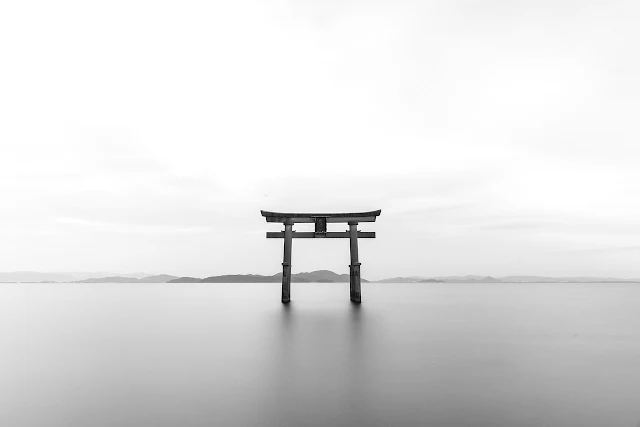
Shinto, often referred to as Shintoism, is the ethnic religion of the Japanese people, deeply intertwined with Japanese culture.
Its existence predates the advent of written historical records in Japan, making it one of the oldest religions in the country.
Shinto, in essence, is a collective of diverse religious beliefs and practices that focus on the worship of kami - the indigenous deities of the Japanese.
This article delves into the intricate tapestry of Shinto, its unique nuances, and how it has shaped the Japanese way of life.
{tocify} $title={Table of Contents}
What is Shinto?
Shinto is an indigenous religion of Japan, characterized by the worship of kami - a term that denotes a wide spectrum of deities, spirits, and phenomena in nature.
The core of Shinto is the Japanese people's deep reverence for nature and ancestors, which manifests in various rituals, ceremonies, and festivals.
The literal translation of Shinto from Japanese is "the way of the gods," implying a path of life that acknowledges and respects the divine.
The Concept of Kami
A key aspect of Shinto is the worship of kami.
These divine entities are not gods in the Western sense but can be regarded as spiritual forces or essences embodying different aspects of life and nature.
They are believed to inhabit natural objects such as trees, rocks, rivers, and mountains.
Even abstract concepts like fertility, luck, and protection can be embodied as kami.
The kami can manifest in various forms - humans, animals, objects, or even abstract entities.
This broad spectrum of kami representation lends Shinto its polytheistic and animistic characteristics.
Shinto Shrines: Abode of the Kami
Shinto shrines, known as jinja, are places for the veneration of kami.
These structures are designed to serve as the dwelling place of the kami and offer a space for rituals, ceremonies, and offerings.
The architecture of the shrines is specific and symbolic, with distinctive features such as torii gates and shimenawa ropes marking the sacred space.
The Ise Shrine, dedicated to the sun goddess Amaterasu, is considered the most sacred Shinto shrine.
The Tennō or the Japanese Emperor is also considered the highest authority in Shinto, with the belief that the emperor is a direct descendant of the sun goddess Amaterasu.
The Shinto-Buddhism Syncretism
Shinto and Buddhism, the two most significant religions in Japan, have a long history of co-existence and mutual influence.
Over centuries, Shinto and Buddhism have intermingled to the extent that distinguishing between them can be challenging.
A primary characteristic distinguishing Shinto from Buddhism is Shinto's focus on this world.
Unlike Buddhism, which has a rich textual tradition, Shinto is largely oral, with no sacred scriptures in the traditional sense.
Shinto Mythology and Imperial Rituals
Shinto mythology, primarily sourced from ancient texts like the Kojiki and Nihonshoki, narrates the creation of Japan and the genesis of the imperial lineage.
The central characters in these myths are the celestial gods Izanagi and Izanami, who gave birth to the Japanese islands and various other deities.
The most prominent among their offspring was Amaterasu, the sun goddess, who is considered the supreme deity in Shinto and the mythical ancestor of the Japanese emperors.
Shinto in the Modern Era and the Present
The Meiji Restoration in 1868 marked a significant shift in the status of Shinto.
It was established as a national cult and used as a tool for reviving the power of the emperor.
It was during this period that a law separating Shinto and Buddhist practices was enacted, leading to significant changes in the religious landscape of Japan.
However, traces of Shinto-Buddhist syncretism can still be observed in many religious institutions in Japan today.
Shinto Practices and Rituals
Shinto practices are deeply rooted in the Japanese way of life.
Unlike many other religions, Shinto doesn't have regular congregational worship.
Instead, individuals visit shrines at their convenience to pay respect to the kami.
Major life events such as birth, marriage, and death are often marked by Shinto rituals.
Periodic festivals, or matsuri, are significant elements of Shinto practice, marking important events in agricultural cycles or local legends.
Prominent Deities and Shrines
While there are countless kami venerated in different regions of Japan, the primary deities revered in Shinto include Amaterasu, the sun goddess, Izanagi and Izanami, the creator gods, and Hachiman, the god of war.
The Ise Shrine, dedicated to Amaterasu, is considered the most sacred shrine in Shinto.
Other prominent shrines include the Izumo Taisha and the Meiji Shrine in Tokyo.
Conclusion
Shinto, as an indigenous religion deeply rooted in the Japanese way of life, provides a unique lens to understand the cultural fabric of Japan.
Its reverence for nature, ancestors, and myriad deities known as kami, has shaped the spiritual landscape of the country.
Although Shinto has evolved and adapted over centuries, its essence remains unchanged, continuing to guide the spiritual life of the Japanese people.

Post a Comment